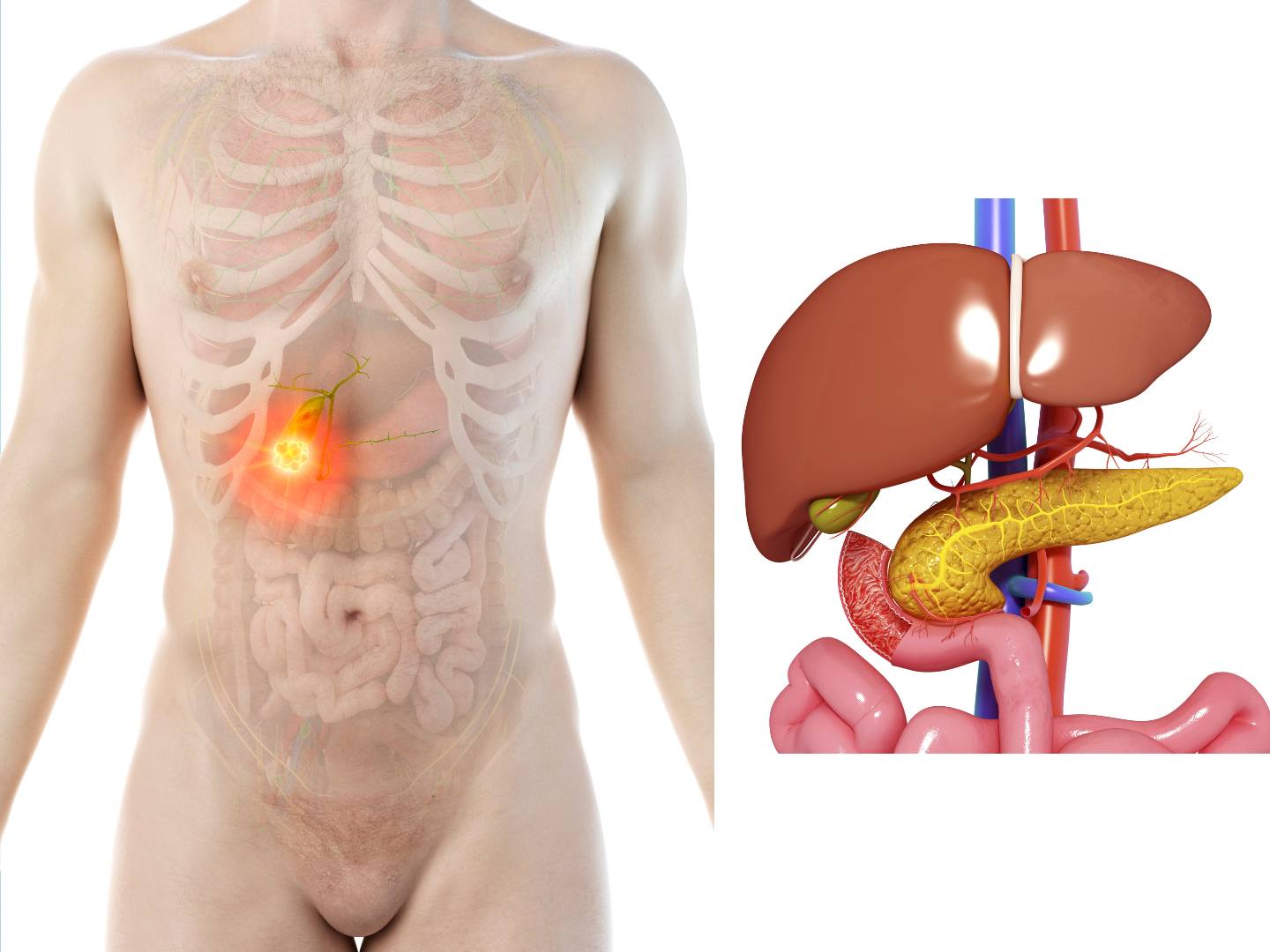Laparoscopic cholecystectomy for gall stones is a very frequently performed surgery. In most of the cases this is a safe and straight forward surgery. The gall bladder with the stones is usually sent for pathologic examination. Most of the time the report obtained is that of chronic cholecystitis. Rarely however we can get a report suggesting gall bladder cancer. This is termed “Incidental gall bladder cancer” and is seen in about 0.2 percent cases of laparoscopic cholecystectomy.
Before going into the treatment of these cancers we need to analyze why this happens.
Gall bladder cancer is a rare cancer and is not commonly suspected. To add to this, stones and cancer can sometimes be coexistent. When ultrasound is done for diagnosis of gall stones certain features in the ultrasound should alert the sonologist and the treating doctors regarding the possibility of gall bladder cancer. These include.
- Increased thickness of the gall bladder wall much more than expected due to gall stones
- Irregularities in the gall bladder wall
- Presence of masses within the gall bladder wall
- Mucosal plaques
- Presence of enlarged lymph nodes around the gall bladder
When these features are present it would be prudent on the part of the treating surgeon to get additional imaging like CT scan or MRI. CT or MRI can shed more clarity regarding the possibility of gall bladder cancer in these patients.
If the suspicion of gall bladder cancer is high then most surgeons may prefer open surgery rather than laparoscopic cholecystectomy. Intra operative frozen section can also be used to confirm the presence of cancer.
Many times, the diagnosis of cancer comes after the surgery when the pathology report is obtained. In these cases, the treatment will depend on the stage of the cancer.
If the cancer is in very early stage and has not yet breached the muscle layer T1a then a second surgery can be avoided Anything above this stage normally requires a repeat surgery. This procedure is known as revision radical cholecystectomy.
The additional things done during this surgery are :
- Removal of a wedge of liver adjoining the previous gall bladder
- Revision of the cystic duct stump
- Removal of the lymph nodes around the gall bladder
There is also a risk of tumour deposits at the sites where the port insertion was done during previous surgery and few surgeons do a wide excision of the surgical scan. Depending on the pathology report additional treatment like chemotherapy and radiation may be required.
Gall bladder cancer is an aggressive one and the results of treatment especially in higher stages is not very great. While getting operated for gall stones the possibility of cancer needs to be kept in the corner of the mind and one should not hesitate to do additional imaging if required. In these cases, it is always better to be safe than sorry.
Dr Anil Kamath is a senior consultant surgical oncologist with expertise in treating Gall Bladder cancers. He is available for consultation at Apollo Hospital, Bannerghatta Rod and Healius cancer clinic. For appointment call +91 9900613143
